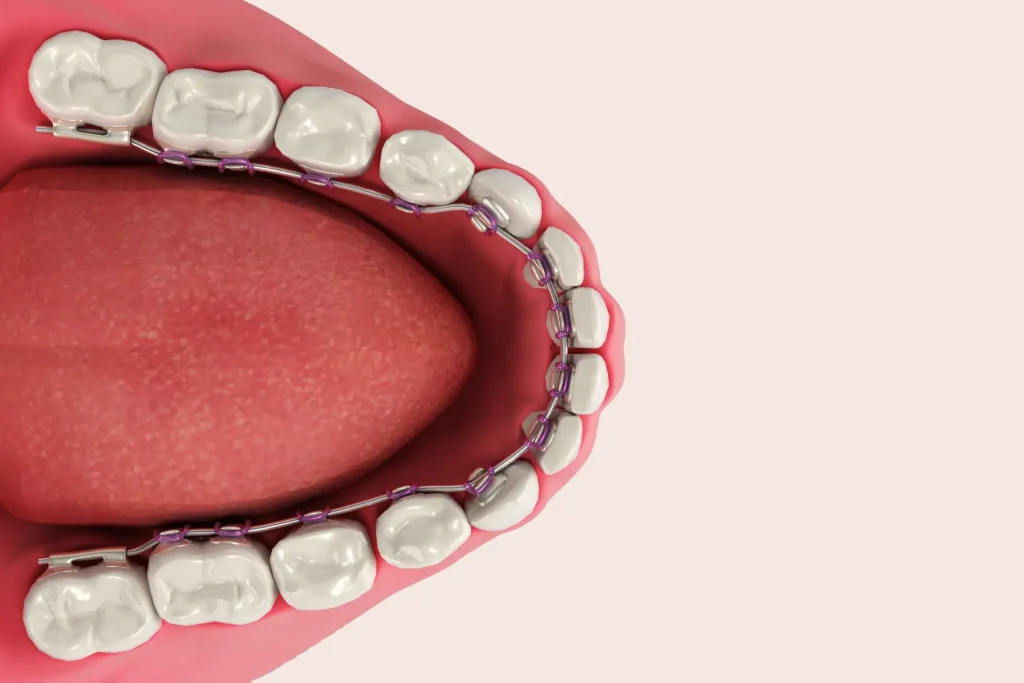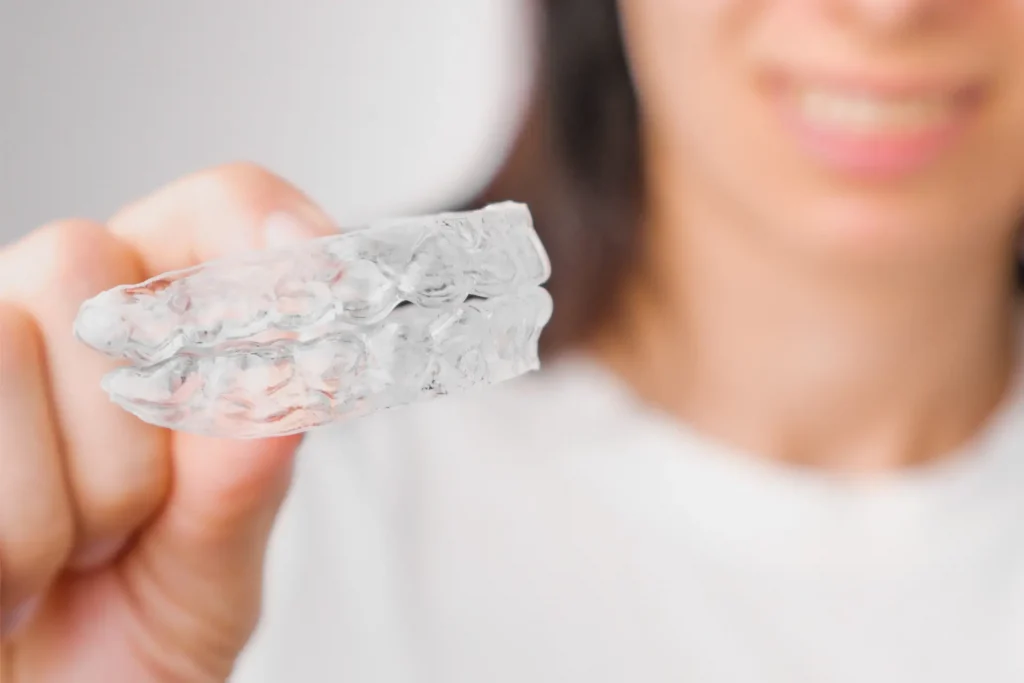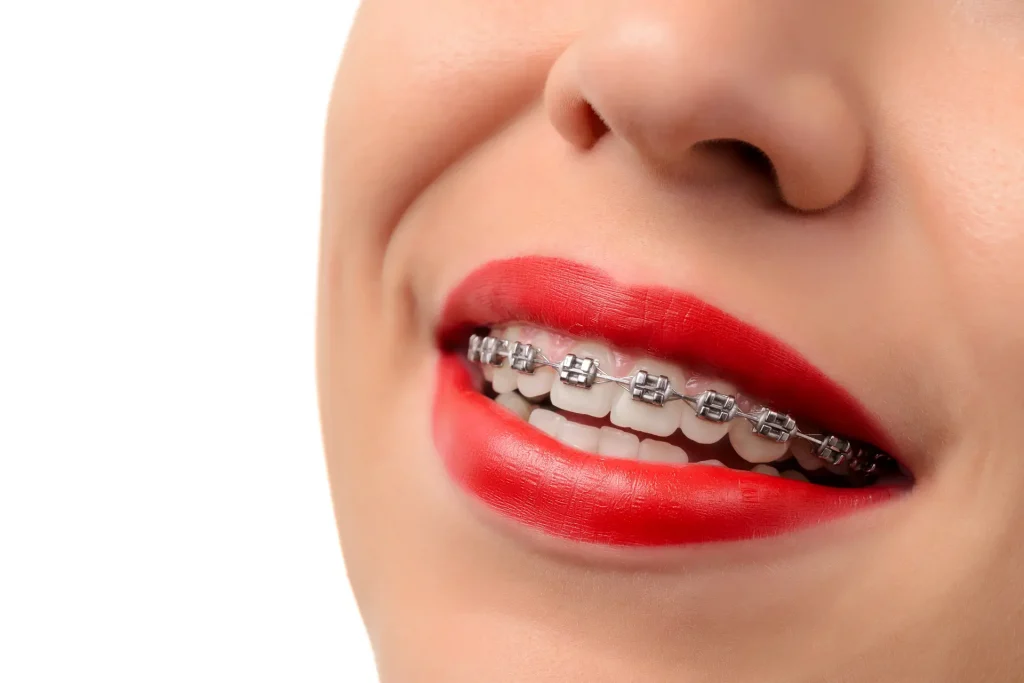
Traditional braces have earned the unfavourable nickname ‘train tracks’ for their bulky, metallic appearance. And although they have been an effective form of orthodontic treatment for over 100 years, there are now many alternatives for patients to choose from.
Some alternatives enable you to remove your braces while eating, while others are simply hidden from sight when you smile. This means there is an option to suit most requirements, budgets and orthodontic issues.
There are 4 main alternatives to traditional braces. They are:

Lingual braces have a very similar makeup to conventional braces, using metal brackets and wires. The main difference is that the braces sit behind the teeth, facing the tongue, rather than on the front. This means they are virtually invisible to others when the wearer smiles and eats, making them an attractive option for those who worry about their looks.
In the same way as traditional braces, lingual braces apply gentle pressure to the teeth over time until they are aligned. They do require manual tightening, which means that wearers will have to visit the dentist every few weeks to keep the teeth moving.
There are two kinds of lingual braces to choose from, ‘social’ and standard. ‘Social’ lingual braces are fixed to the front six to eight teeth – these are ideal for small gaps. The standard lingual brace is fixed to the whole arch, which is suitable for most common forms of malocclusions, such as crowded, gapped or crooked teeth.
The best way to find out if lingual braces are suitable for you is to book an appointment with a dentist or orthodontist.

Clear aligners are made of ultra-thin plastic material which wraps neatly around the teeth, applying gentle pressure to move them. As they don’t consist of metal brackets and wires, clear aligners have become very popular for their comfort, removability, and discreetness.
People who are undergoing clear aligner treatment must wear the aligners for 22 hours a day, and only remove them to eat, drink, brush their teeth, and clean the aligners themselves. The removability of the aligners means that people can brush and floss their teeth with ease, and they don’t have to worry about food getting stuck between metal parts.
Another advantage of clear aligners is that the treatment is largely undergone at home. After the patient’s dental impression has been taken in office, they will receive a series of aligner trays which are switched gradually as the teeth become straighter. This streamlined process means that the patient does not need to visit the dentist as regularly as someone with traditional braces.
Perhaps the biggest advantage of clear aligners is their discreetness – they are virtually invisible to the naked eye. This, combined with their removability, comfort and ease of treatment makes them an attractive alternative to conventional braces.
But although they offer many advantages, there are a few reasons why clear aligners might not be for everyone. Many factors can impact your suitability, such as the severity of your malocclusion, and whether or not all your adult teeth are present.
That said, clear aligners can usually treat most orthodontic issues, so it’s best to speak to an expert to find out if you are a good candidate.

Ceramic braces are very similar to conventional braces in that they consist of brackets and wires. The only difference is that the components of the orthodontic device are clear or tooth-coloured, making them slightly less noticeable than their metallic counterparts. This added discreetness is what makes ceramic braces an attractive alternative to metal braces, especially to those who are concerned about their looks.
This added advantage comes at a price, however, and ceramic braces are often more expensive than their metal counterparts. The elastic ties that hold the wires in place can also become easily stained, especially if the tie is clear or tooth-coloured. This means the wearer needs to be extra diligent about food choices, and stay away from anything that is likely to discolour the braces.
As they work in the same way as traditional metal braces, ceramic braces can usually treat most forms of malocclusion, including crowded teeth, overbite and spacing. To find out if you’re a suitable candidate for ceramic braces, speak to your local dentist or orthodontist.

Self-litigating braces are similar to traditional braces, although they use a metal archwire to connect the brackets, rather than a rubber band. The braces consist of specialised brackets that the archwire clips directly into, creating a more discreet appearance. Self-litigating braces are available in either clear or metal, though the archwire is usually metallic. In terms of price, self-litigating braces will generally cost around the same as traditional braces.
Their streamlined appearance makes them an attractive alternative to bulkier traditional braces, although they aren’t as discreet as other options, such as clear aligners.
The installation process of self-litigating braces is exactly the same as metal braces, and the wearer will need to visit their dentist or orthodontist for manual tightening every few weeks. They are able to treat most forms of malocclusion, though this is entirely dependent on the patient’s case. If you are interested in getting self-litigating braces, you should speak to a dentist or orthodontist first. They will be able to tell you if they are the most suitable alternative for you.
There is only one way to find out which alternative to traditional braces is best suited to your case – speak to a licensed dentist or orthodontist. You can book an appointment with a local expert on our website. They will be able to advise you on the most suitable form of orthodontic treatment for your case, and give you a reasonable estimate in terms of treatment length and cost.